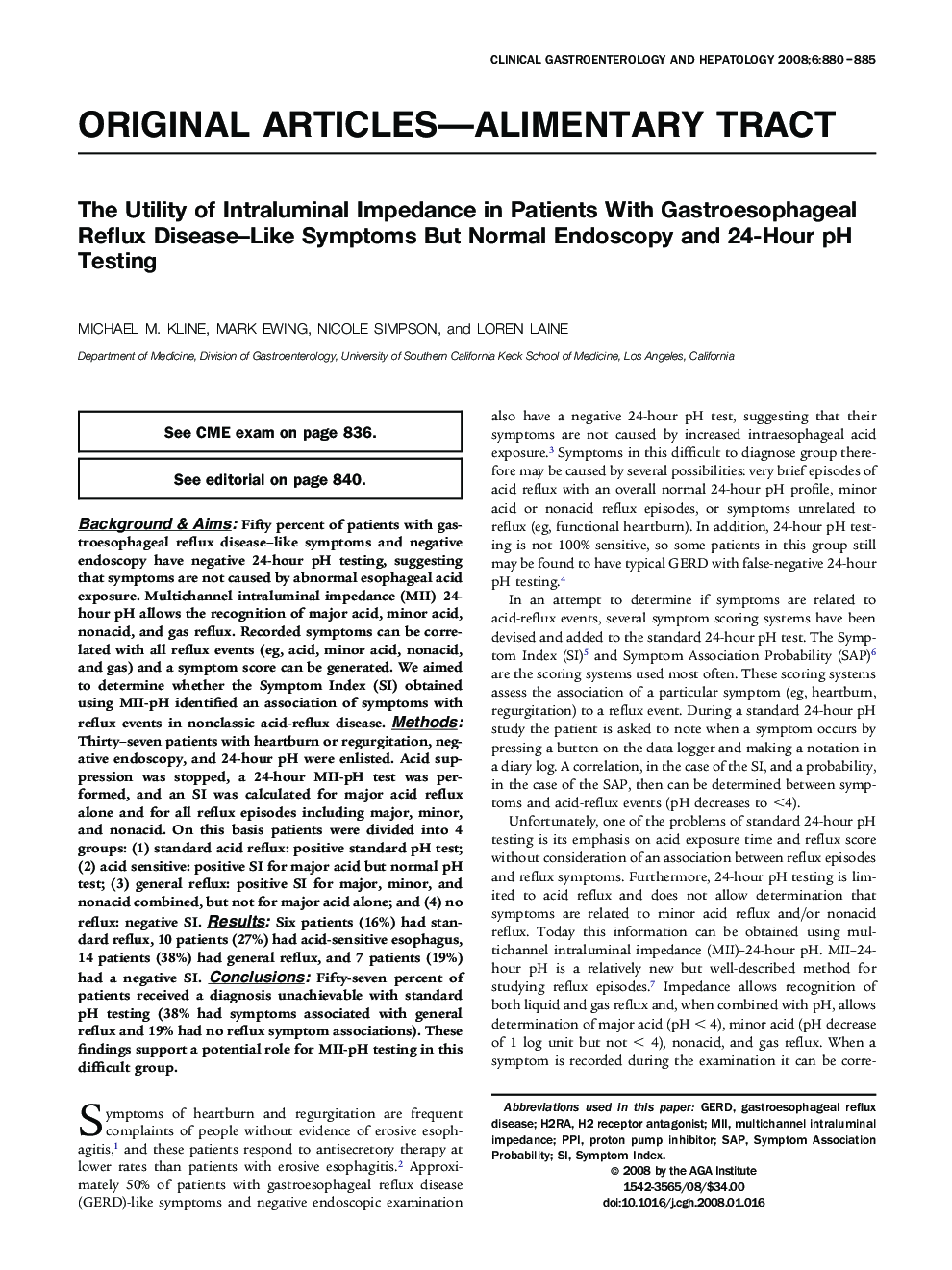| Article ID | Journal | Published Year | Pages | File Type |
|---|---|---|---|---|
| 3285542 | Clinical Gastroenterology and Hepatology | 2008 | 6 Pages |
Abstract
Background & Aims: Fifty percent of patients with gastroesophageal reflux disease-like symptoms and negative endoscopy have negative 24-hour pH testing, suggesting that symptoms are not caused by abnormal esophageal acid exposure. Multichannel intraluminal impedance (MII)-24-hour pH allows the recognition of major acid, minor acid, nonacid, and gas reflux. Recorded symptoms can be correlated with all reflux events (eg, acid, minor acid, nonacid, and gas) and a symptom score can be generated. We aimed to determine whether the Symptom Index (SI) obtained using MII-pH identified an association of symptoms with reflux events in nonclassic acid-reflux disease. Methods: Thirty-seven patients with heartburn or regurgitation, negative endoscopy, and 24-hour pH were enlisted. Acid suppression was stopped, a 24-hour MII-pH test was performed, and an SI was calculated for major acid reflux alone and for all reflux episodes including major, minor, and nonacid. On this basis patients were divided into 4 groups: (1) standard acid reflux: positive standard pH test; (2) acid sensitive: positive SI for major acid but normal pH test; (3) general reflux: positive SI for major, minor, and nonacid combined, but not for major acid alone; and (4) no reflux: negative SI. Results: Six patients (16%) had standard reflux, 10 patients (27%) had acid-sensitive esophagus, 14 patients (38%) had general reflux, and 7 patients (19%) had a negative SI. Conclusions: Fifty-seven percent of patients received a diagnosis unachievable with standard pH testing (38% had symptoms associated with general reflux and 19% had no reflux symptom associations). These findings support a potential role for MII-pH testing in this difficult group.
Keywords
Related Topics
Health Sciences
Medicine and Dentistry
Gastroenterology
Authors
Michael M. Kline, Mark Ewing, Nicole Simpson, Loren Laine,
